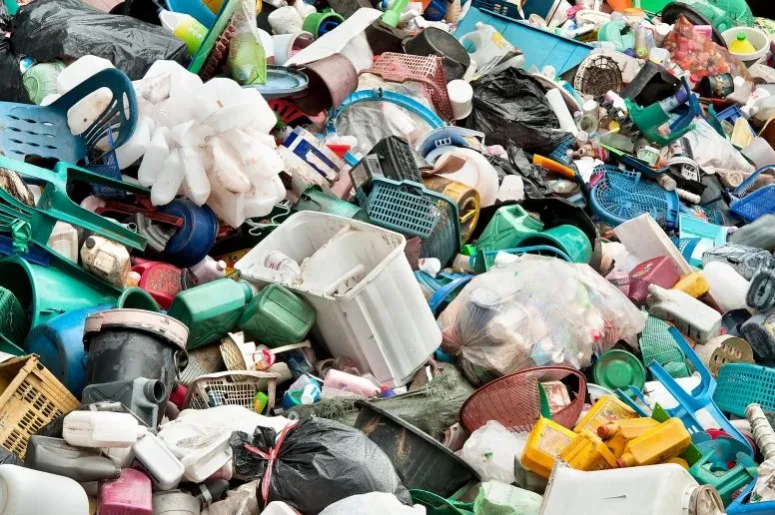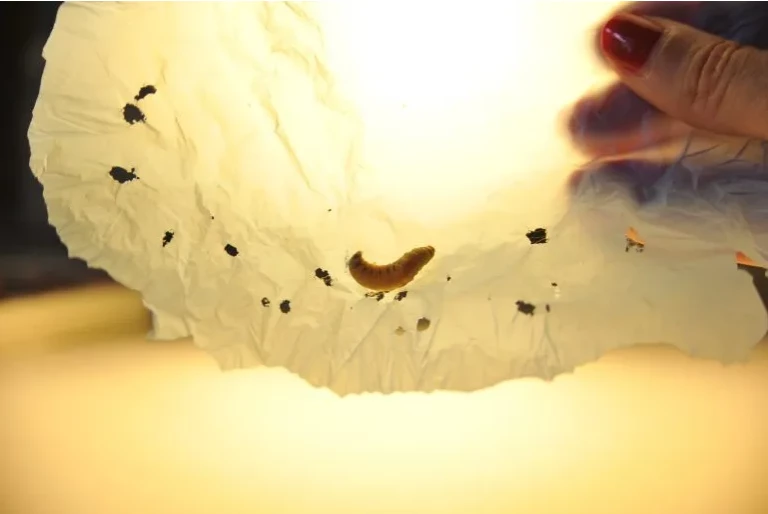Worms with Superpowers - How a special worm can quickly degrade plastics

The lepidopteran Galleria mellonella worm species is able to quickly break down polyethylene through the use of its saliva.
CSIC researchers discovered that waxworm saliva can degrade plastic. This discovery could have many potential applications in treating or recycling plastic waste. In 2017, the team discovered that Galleria mellonella, a worm species of Galleria mellonella can degrade polyethylene (polyethylene). The team now knows how it does it. Their saliva contains enzymes belonging to the phenol-oxidase family that can rapidly initiate polyethylene degrading at room temperature. Federica Bertocchini (CSIC researcher at CIB-CSIC) led the study. She claims these enzymes are the only ones that can break down polyethylene plastic without pretreatment. As it waits for review, the study's results have been posted online at BioRxiv. The study was funded by the Roechling Foundation (Germany).
Oxygen must penetrate the polymer (the plastic molecules) in order for plastic to decay. Bertocchini explains that this is the first step of oxidation. It is often caused by high temperatures or exposure to sunlight. She adds that plastic can take months, or even years, to degrade under normal environmental conditions.

Thanks to enzymes in its saliva, the wax worm can degrade polyethylene. Credit: Cesar Hernandez Regal.
"Now we have found out that enzymes in the wax worm's saliva perform this crucial step: they oxidize the plastic. This means they can overcome the bottleneck in the plastic degradation process and accelerate its decomposition," she adds.
Polyethylene is one of the strongest plastics and the most commonly used. When combined with polypropylene or polystyrene, it accounts for 70% total plastic manufacturing. Plastic pollution is a serious problem that threatens the environment and health of people all over the globe. It is imperative to find solutions. One of the most promising areas of research is the biological breakdown of plastics. Biodegradation is a process that involves microorganisms such as bacteria and fungi. Only a few microorganisms have been known to be capable of degrading the polyethylene, a strong plastic polymer. In most cases, pretreatment is necessary to prevent oxidation and allow microorganisms to have a gradual effect on the plastic.
Plastic-eating worms
It was discovered that certain insect species belonging to the Coleoptera and Lepidoptera orders were capable of degrading polyethylene and polystyrene a few years back. This opened up a new area of research. Bertocchini says that the fastest insect in our laboratory was the Galleria mellonella larvae, also known as the waxworm. After just an hour, these larvae can oxidize and degrade the polymers in plastic very quickly."
"In recent years, many efforts have been made in order to understand how these insects do it. Numerous studies have been done on microorganisms in the digestive system of these worms. This assumption is based on plastic being eaten by worms and its subsequent degradation. She explains that this assumption is not entirely solid. "Our research has been focused on the worms' oral cavity since the beginning."
Bertocchini explains that researchers have examined the behavior of the waxworm when it comes in contact with polyethylene and enzymes found in the worms saliva (i.e. the liquid inside the insect’s mouth) can cause polyethylene to degrade. "The polymer reacts quickly with saliva and oxidizes or depolymerizes in a matter of hours when it comes into contact and we have found degraded residues in the presence worm saliva", she added.
The researchers also analyzed saliva with electron microscopy, and found a high level of protein. The researcher explained that two enzymes were isolated from saliva and could reproduce the oxidation in the whole saliva. These proteins, Ceres and Demetra, are part of the phenol oxidase family.
The Demetra enzyme left visible marks on polyethylene's surface, which can be seen by the naked eye. This effect was further confirmed by the formation of degradation products after the enzyme had been exposed to polyethylene. She concludes that Ceres also oxidizes polyethylene but leaves no visible marks. This suggests that they have different effects on polyethylene."
How do phenol oxidase enzymes function?
Plants use phenols to protect themselves from potential enemies like insect larvae. Insects could make phenol oxidase enzymes to oxidize and neutralize plant phenols. This would allow them to feed on plants safely. Many plastic additives contain phenols. These chemicals could be targets for enzymes and provide the conditions necessary for the plastic's oxidation or depolymerization. Researchers warn that this speculation is only preliminary and that further research will be necessary to understand the enzyme's mechanism of action.
It is even more fascinating to ask how waxworms are able to do this. Researchers believe it may be an evolutionary process. "Waxworms eat hive wax and pollen of a variety of plant species. This enzyme could be extremely useful for these insects, considering hive wax contains phenols. This would explain in part why wax worms are able to break down polyethylene. This theory, however, is still speculation and we need to do more research that combines insect biology and biotechnology.
Reference: “Wax worm saliva and the enzymes therein are the key to polyethylene degradation by Galleria mellonella” by A. Sanluis-Verdes, P. Colomer-Vidal, F. Rodríguez-Ventura, M. Bello-Villarino, M. Spinola-Amilibia, E. Ruiz-López, R. Illanes-Vicioso, P. Castroviejo, R. Aiese Cigliano, M. Montoya, P. Falabella, C. Pesquera, L. González-Legarreta, E. Arias-Palomo, M. Solà, T. Torroba, C.F. Arias and F. Bertocchini, 8 April 2022, BioRxiv. DOI: 10.1101/2022.04.08.487620
End of content
Không có tin nào tiếp theo
